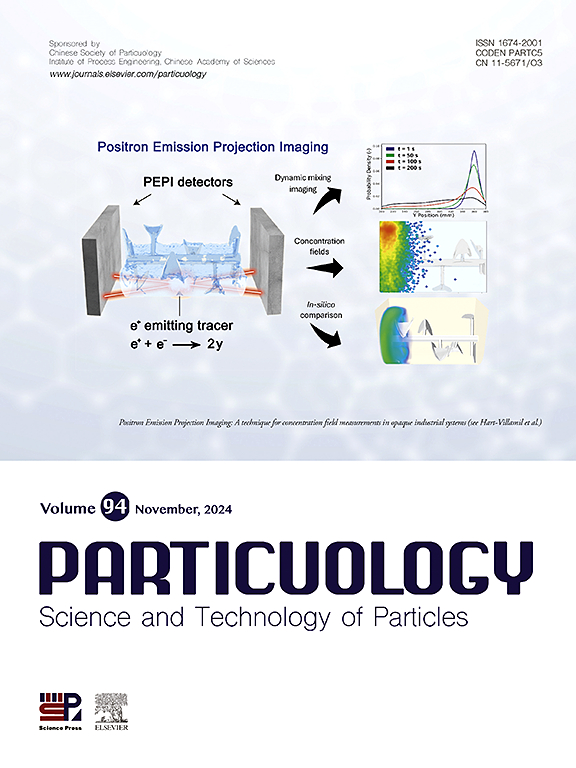Advanced particle technologies in the preparation of dry powders for inhalation
IF 4.1
2区 材料科学
Q2 ENGINEERING, CHEMICAL
引用次数: 0
Abstract
Drug delivery via pulmonary inhalation can achieve targeted treatment by directly delivering the drugs to the area for treatment. The method is developing rapidly for the treatment of local and systemic diseases. However, dry powders for inhalation need to exhibit excellent aerodynamic performance. Particle size, morphology and density need to be tightly regulated to guarantee effective lung deposition and assure long-term chemical stability of the drug. In this work, the compositions and requirements of dry powders for inhalation are discussed. Furthermore, the state-of-art methods in particle technology for dry powders for inhalation, such as milling, droplet evaporation, direct crystallization, supercritical fluid and particle surface coating technologies, are reviewed. In addition, the application of process analytical techniques in the preparation of dry powders for inhalation, which can improve process capability and drug safety, is also discussed. Finally, current challenges in the field of dry powders for inhalation are discussed and some directional guidance is proposed to promote delivery efficiency, drug efficacy and process development.

制备吸入干粉的先进颗粒技术
经肺吸入给药,直接将药物输送到治疗部位,实现靶向治疗。该方法在局部和全身性疾病的治疗中发展迅速。然而,用于吸入的干粉需要具有优异的气动性能。需要严格调节颗粒大小、形态和密度,以保证有效的肺沉积和药物的长期化学稳定性。本文讨论了吸入性干粉的组成和要求。综述了干粉吸入颗粒技术的最新进展,如研磨技术、液滴蒸发技术、直接结晶技术、超临界流体技术和颗粒表面涂层技术。此外,还讨论了工艺分析技术在吸入性干粉制备中的应用,以提高工艺能力和药物安全性。最后,讨论了目前吸入干粉领域面临的挑战,并提出了一些方向性指导,以提高输送效率、药物疗效和工艺开发。
本文章由计算机程序翻译,如有差异,请以英文原文为准。
求助全文
约1分钟内获得全文
求助全文
来源期刊

Particuology
工程技术-材料科学:综合
CiteScore
6.70
自引率
2.90%
发文量
1730
审稿时长
32 days
期刊介绍:
The word ‘particuology’ was coined to parallel the discipline for the science and technology of particles.
Particuology is an interdisciplinary journal that publishes frontier research articles and critical reviews on the discovery, formulation and engineering of particulate materials, processes and systems. It especially welcomes contributions utilising advanced theoretical, modelling and measurement methods to enable the discovery and creation of new particulate materials, and the manufacturing of functional particulate-based products, such as sensors.
Papers are handled by Thematic Editors who oversee contributions from specific subject fields. These fields are classified into: Particle Synthesis and Modification; Particle Characterization and Measurement; Granular Systems and Bulk Solids Technology; Fluidization and Particle-Fluid Systems; Aerosols; and Applications of Particle Technology.
Key topics concerning the creation and processing of particulates include:
-Modelling and simulation of particle formation, collective behaviour of particles and systems for particle production over a broad spectrum of length scales
-Mining of experimental data for particle synthesis and surface properties to facilitate the creation of new materials and processes
-Particle design and preparation including controlled response and sensing functionalities in formation, delivery systems and biological systems, etc.
-Experimental and computational methods for visualization and analysis of particulate system.
These topics are broadly relevant to the production of materials, pharmaceuticals and food, and to the conversion of energy resources to fuels and protection of the environment.
 求助内容:
求助内容: 应助结果提醒方式:
应助结果提醒方式:


